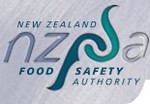The coffee chemical
People all around the world have enjoyed caffeine in various forms for centuries. My morning usually starts with a steaming cup of coffee and, by simply looking at the number of coffee shops found across New Zealand and the quality of the brews, I think it’s fair to say we are a nation of caffeine lovers.
However, as with everything we eat and drink there is potential to overdo it with caffeine unless we exercise moderation. If we have too much caffeine, which is a central nervous system stimulant, we can suffer adverse effects such as dizziness, rapid heartbeat, irritability, anxiety, tremors and insomnia.
In recent years there has been increasing concern from both the public and regulators regarding the exposure of children and teenagers to caffeine in energy drinks, which contain high levels. Because of their relatively smaller body size, these population groups are particularly prone to suffering adverse effects from higher intakes of caffeine.
Energy drinks have been available for more than a decade in New Zealand and during that time have become popular with students wanting to pull an ‘all nighter’ while cramming for exams and others needing a pick-me-up to get through the day.
More recently energy shots – which can contain twice the caffeine level of a single shot espresso – have hit the shelves and there is now a plethora of caffeinated products on the market. Taking a look around various retail outlets in Christchurch in February 2010 it was easy to identify 28 energy drinks and 16 energy shots that were available to consumers.
When NZFSA identifies a food that might pose a risk to consumers, we apply our Risk Management Framework (RMF) to see whether we need to regulate to manage it. This four-step RMF process starts off with preliminary risk management activities, which in the case of energy drinks and shots led us to commission a risk profile to estimate the exposure from these beverages for the most at-risk population groups: children, teenagers and young males.
The purpose of a risk profile is to provide contextual and background information relevant to a food/hazard combination so we can decide what action, if any, we need to take.
The risk profile hasn’t produced any startling new information. It indicates that temporary adverse effects can occur in some people when they consume about 3 mg of caffeine per kilogramme of body weight a day.
In children this means that if they drink a caffeine energy shot or energy drink on top of their usual intake from tea, kola drinks and coffee, 70 percent could have effects like dizziness, rapid heartbeat, irritability, anxiety, tremors and insomnia. For teenagers, 40 percent could experience these effects. In the general healthy adult population there is no evidence of long-term harm from caffeine consumption of up to 400 mg per day.
The message this should send to parents and caregivers is that, just as they probably wouldn’t hand their child a double long black, they shouldn’t give them energy shots.
Energy drinks and shots are already required by law to carry an advisory statement that the product contains caffeine and is not recommended for children, lactating women or individuals sensitive to caffeine and the caffeine level must also be stated on the label. Additionally the New Zealand Juice and Beverage Association has drawn up a code of practice to minimise marketing of these products to young children, which is a move we are right behind.
Children’s caffeine intake has also been an area of interest across the ditch where the National Health and Medical Research Council is reviewing the current scientific evidence on the effects of caffeine consumption.
At the moment energy drinks are regulated under the Formulated Caffeinated Beverage (FCB) standard under the Food Standards Code, which is administered by Food Standards Australia New Zealand (FSANZ). We do not believe this standard is risk based or that it sufficiently covers the range of products, including shots, on the market at the moment. For this reason NZFSA is working with Australian jurisdictions to propose that FSANZ look at reviewing the FCB. A decision to review the standard rests with the Ministerial Council and FSANZ.
If FSANZ reviewed the FCB standard and assessed the range of products including shots, it is likely that energy shots would be removed from the coverage of the Supplemented Food Standard that currently regulates them in New Zealand as was done with energy drinks in 2002.
Of course public consultation would be a feature of any standard redevelopment process.
NZFSA Chief Executive
Andrew McKenzie
